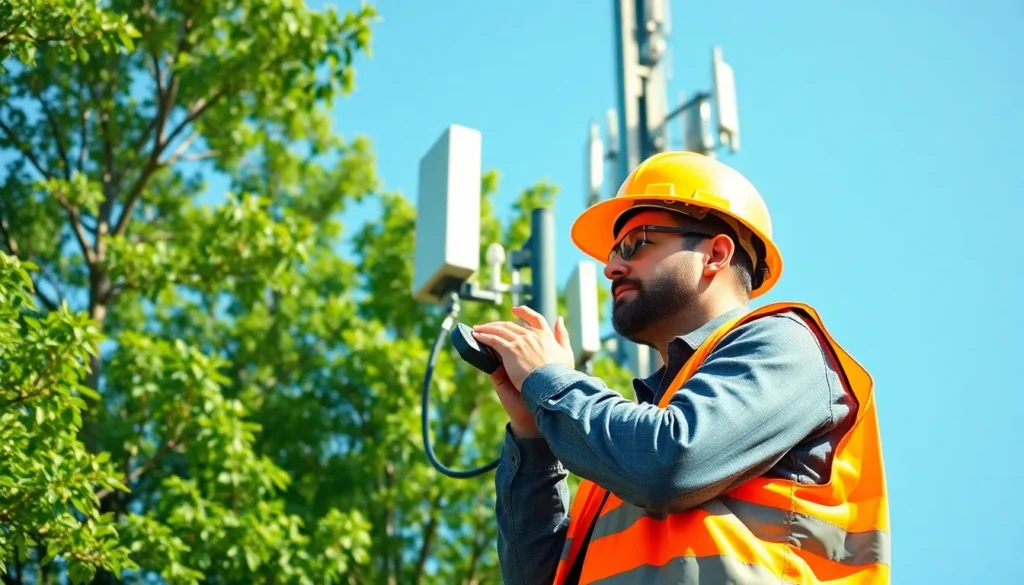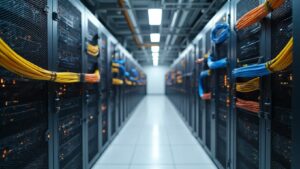
In a world where staying connected is as vital as breathing, telecommunications infrastructure plays the unsung hero role. Think of it as the invisible web that keeps us glued to our devices, whether it’s streaming cat videos or video chatting with Grandma. Without it, chaos would reign—imagine trying to explain TikTok to someone over a tin can and string!
Telecommunications Infrastructure
Telecommunications infrastructure refers to the physical networks and systems that enable communication over distances. This infrastructure includes a variety of components such as cables, satellites, towers, and data centers. It plays a vital role in facilitating voice, data, and video transmission.
Cables form the backbone of telecommunications. Fiber optic cables, for instance, offer high-speed Internet connectivity by transmitting data using light signals. Copper cables still play a role in certain areas, especially for traditional phone lines and older Internet technologies.
Satellites provide global coverage, reaching remote and rural locations. They enable communication where terrestrial infrastructures can’t easily be deployed. Services like satellite television and broadband Internet rely heavily on these orbiting systems.
Towers support cellular networks by hosting antennas that transmit and receive signals. Mobile phone users connect through these towers, which relay information back and forth, ensuring seamless communication. The placement of these towers significantly impacts signal strength and network reliability.
Data centers house servers that store and process vast amounts of information. These centers manage data traffic and support cloud services, facilitating access to applications and content from virtually anywhere. Their efficiency affects not just speed but also the quality of service users experience.
Upgrades are consistently made to this infrastructure to support the growing demand for faster and more reliable services. 5G technology exemplifies these advancements, promising lower latency and increased bandwidth. Each segment of telecommunications infrastructure integrates to create a cohesive network, fundamentally shaping modern communication.
Key Components of Telecommunications Infrastructure

Telecommunications infrastructure consists of vital elements that facilitate effective communication. Each component works together to enhance connectivity and support various technologies.
Networking Equipment
Networking equipment plays a crucial role in data transmission. Routers direct traffic between networks, ensuring information reaches its correct destination swiftly. Switches connect devices within local networks, managing data flow effectively. Firewalls protect networks by monitoring incoming and outgoing traffic, adding a layer of security. Additionally, modems convert digital signals to analog for transmission over various media. Together, these devices form the backbone of telecommunication networks, enabling seamless interaction across multiple platforms.
Transmission Medium
Transmission mediums are essential for carrying signals across distances. Fiber optic cables offer high-speed data transmission, using light to transmit information rapidly over long distances. Copper cables, while more traditional, still provide reliable connections for various applications. Satellites serve as a crucial medium for remote areas, allowing communication where terrestrial options are limited. Additionally, wireless signals transmit data through the air, making mobile and portable communication feasible. Each medium contributes uniquely to the overall effectiveness of telecommunications infrastructure.
Importance of Telecommunications Infrastructure
Telecommunications infrastructure plays a vital role in modern society, underscoring its significance across various sectors.
Economic Impact
Telecommunications infrastructure significantly contributes to economic growth. Various studies indicate that every 10% increase in broadband penetration correlates with a 1.38% increase in GDP growth. High-speed internet access enables businesses to operate more efficiently, facilitating remote work and e-commerce. Prominent sectors, including healthcare and education, leverage telecommunications to enhance service delivery and access. Job creation thrives in industries reliant on connectivity, demonstrating how robust infrastructure fosters innovation and competitiveness. Investment in this vital area leads to improved productivity, ultimately benefiting local and global economies.
Social Connectivity
Social connectivity relies heavily on telecommunications infrastructure. People across the globe connect through platforms like social media, instant messaging, and video conferencing. Improved infrastructure bridges geographical divides, helping maintain relationships regardless of distance. It plays a crucial role during crises, allowing real-time communication for emergency responses. Access to information has increased, empowering communities and promoting social engagement. Lifelines to family, friends, and resources are reinforced by strong infrastructure, emphasizing its importance in everyday life.
Challenges in Telecommunications Infrastructure
Telecommunications infrastructure faces various challenges impacting its efficiency and accessibility. Regulatory frameworks and technological advancements significantly influence these obstacles.
Regulatory Hurdles
Regulatory hurdles pose significant challenges for telecommunications infrastructure. Complex approval processes can delay network deployments, especially in urban areas. Compliance with local, state, and federal regulations often complicates expansion efforts. Additionally, varying standards across regions may hinder consistency in service provision. This inconsistency affects user experience and can limit competitive advantage, affecting service availability and quality.
Technological Evolution
Technological evolution presents both opportunities and challenges in telecommunications infrastructure. Rapid advancements necessitate continuous investment in upgrades and maintenance. Transitioning to new technologies, such as 5G, requires substantial financial resources and skilled workforce training. Obsolescence of legacy systems also presents challenges, as companies must manage coexistence between old and new technologies. Furthermore, cybersecurity threats escalate alongside technological progress, demanding robust protective measures to safeguard networks.
Future Trends in Telecommunications Infrastructure
Telecommunications infrastructure is poised for significant transformation, driven by emerging technologies and user demands. 5G technology plays a pivotal role, offering enhanced speed and reliability. This advancement will enable smart cities and the Internet of Things (IoT) to reach their full potential, connecting millions of devices seamlessly.
Artificial intelligence is becoming increasingly integral to network management. It enhances predictive maintenance and optimizes data traffic. Utilizing AI algorithms can lead to more efficient operations, reducing downtime and improving user experiences.
Cloud services continue to expand, leading to the rise of edge computing. This technology processes data closer to the source, minimizing latency and increasing response times. Businesses benefit from faster real-time analytics, improving decision-making processes.
Sustainability is a growing trend in telecommunications infrastructure. Companies are adopting eco-friendly practices, such as optimizing energy consumption and utilizing renewable energy sources. These efforts contribute to reducing the environmental impact of telecommunications networks.
Cybersecurity measures are increasingly critical as infrastructure evolves. With more devices connected, vulnerabilities are rising. Implementing advanced security protocols helps protect networks from cyber threats and ensures data integrity.
Collaboration among telecom providers is also on the rise. Shared infrastructure solutions can reduce costs and expand coverage. This synergy allows smaller providers to access advanced technologies and compete in the market effectively.
Investment in fiber optic networks remains a priority. High-capacity fiber is essential for supporting increased data demands, ensuring robust connections across urban and rural areas. The continued development of these networks will enhance overall communication capabilities.
Conclusion
Telecommunications infrastructure is fundamental to the way society communicates and operates. Its intricate components work together to create a seamless experience that enhances both personal and professional interactions. As technology continues to evolve the importance of robust infrastructure becomes even more pronounced.
Future advancements promise to reshape connectivity further with innovations like 5G and the Internet of Things. These developments will not only improve efficiency but also drive economic growth and foster social connections. Addressing challenges such as regulatory hurdles and cybersecurity threats will be crucial for maintaining a resilient telecommunications landscape.
Investing in modern infrastructure is essential for meeting the ever-growing demands of today’s digital world. As society moves forward the focus on sustainable practices and collaboration among providers will play a significant role in shaping the future of telecommunications.






